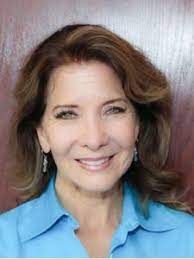
ECNS Experts Talk COVID-19
Q&A

Conrad Fivaz, M.D., Medical Director,
Priority Solutions, Inc.
- How were you so fast in developing/revising the ECNS Protocol in response to the pandemic prior to the World Health Organization (WHO) declaration?
While traveling in Europe late January 2020, it was quite clear that this virus would end up in a pandemic of some proportions. On Jan. 29, 2020, I reached out to the ECNS Council of Standards with a prototype of our then “2019 nCov” Protocol (the name was later changed to the Pandemic COVID-19 Protocol). The Council of Standards members were very responsive, and by Feb. 3, 2020, we had our draft protocol ready for the software development phase. Priority Solutions officially released the new Pandemic COVID-19 Protocol on March 5, 2020, to our clients in the English languages, and that was six days before WHO officially declared a pandemic on March 11, 2020.
Briefly describe the features of the ECNS COVID-19 Protocol.
Our pandemic protocol in ECNS prior to COVID-19 was developed specifically for the H1N1 (swine flu) pandemic. We had to change the existing protocol as symptomology goes (and changed again as we learned more about the symptomology over the next few months) as well as high risk factors that were proving to be different. COVID-19 had a higher case fatality rate and being older than 65 years was considered a high-risk factor in COVID-19, whereas individuals of that age group had some natural immunity to H1N1.
Intent of the protocol
Our intent was to differentiate callers/patients with complications of COVID-19 (i.e., pneumonia and respiratory distress) from those who potentially could be exposed to the virus and those who may have contracted the virus with minimal symptoms.
Self-care instructions
This protocol offers ECNs the opportunity to provide interim self-care instructions for those callers/ patients who may have been exposed to SARS-CoV-2 as well as those caring for or in close proximity to these patients.
Support for serious disease
Further, this protocol supports the ECNs in identifying those individuals who may be at risk for any potentially serious disease.
What feedback have you received regarding the protocol's effectiveness?
The following are statistics NOTRUF NÖ (Austria) shared on the outcomes from the use of the COVID-19 Pandemic Protocol.
- NOTRUF NÖ started using the protocol on April 7, 2020
- Completed 1,587 cases (second most used protocol during this period)
- Level of care distribution:
- Telephone contact with doctor or clinic: 792 cases
- Emergency Response System: 386 cases
- Emergency department as soon as possible: 107 cases
- Self-care advice: 239 cases
- Other level of care (e.g., pharmacy, community care):
Did you ever expect/anticipate the duration of the pandemic?
Looking back at the swine flu (H1N1) pandemic we had in 2009, it is no surprise that we still find ourselves in the throes of this pandemic. What I did not expect was such a short turnaround on the development of what is currently an effective vaccine.
Finally, describe being part of this process—exhilarating, exhausting, rewarding?
What a privilege to be part of the process. Although it meant many late nights and weekends to get the protocols and systems in place, it has been very rewarding knowing we are making a difference in someone’s life that has been affected by this pandemic.

Gigi Marshall, RN,
ECNS™ Program Administrator
You developed an ECNS course specific to managing only calls involving the coronavirus. In what ways does the course differ from the standard ECNS certification course? Have other agencies, aside from Northwell CCC, picked it up to increase nurse staffing in the communication center?
A specific certification for nurses who were not certified in ECNS. The first modified ECNS course was held April 23, certifying six RNs as an ECN-p (pandemic) in three days. An ECN-p would assist only in managing pandemic-related calls. They do not assist with any other type of ECNS call and were required to pass an ECN-p certification exam.
Yes, other agencies inquired and purchased the ECNS since the onset of the COVID-19 pandemic, but more predominant is the increase in ECNS software (LowCode®) licenses by existing clients and, in at least one case, an increase of nearly 50%!
Describe being part of this process—exhilarating, exhausting, rewarding?
I would describe our experience and work as necessary, first and foremost. And yes, this was rewarding as it allowed us to assist in the pandemic, even though we are not in the trenches with the rest of the nursing and physician troops.







